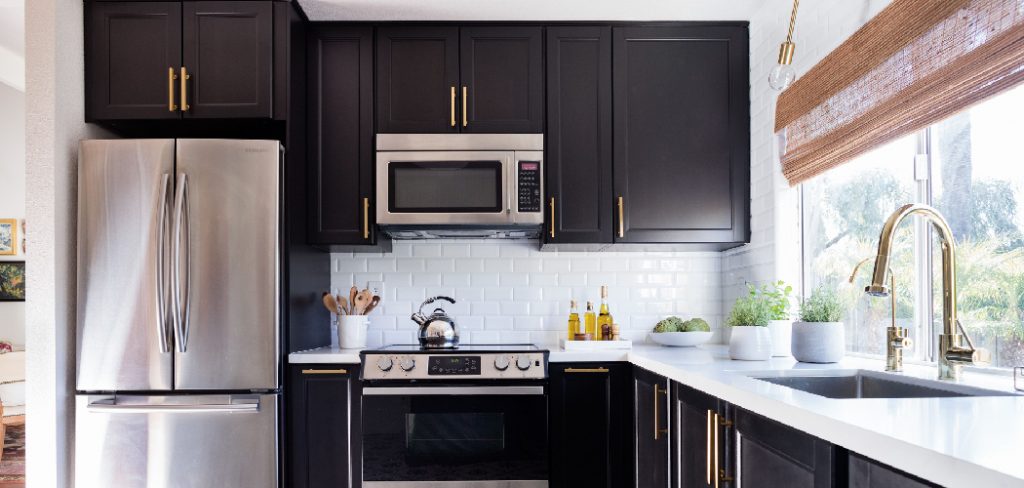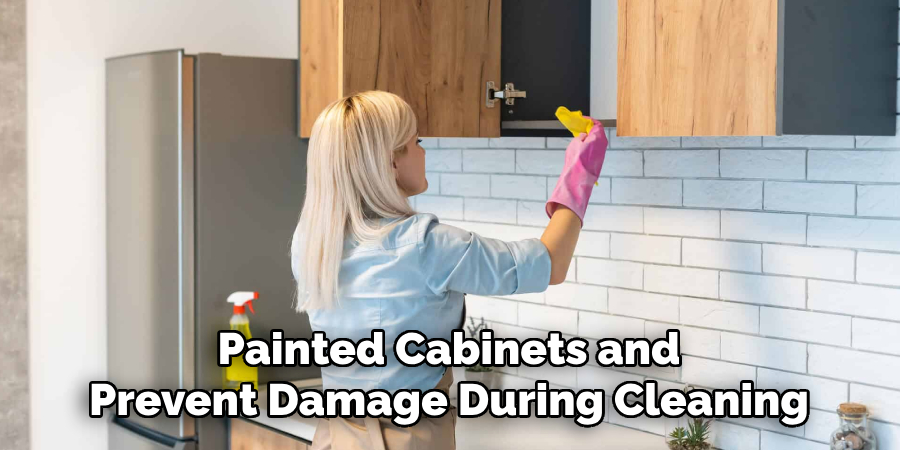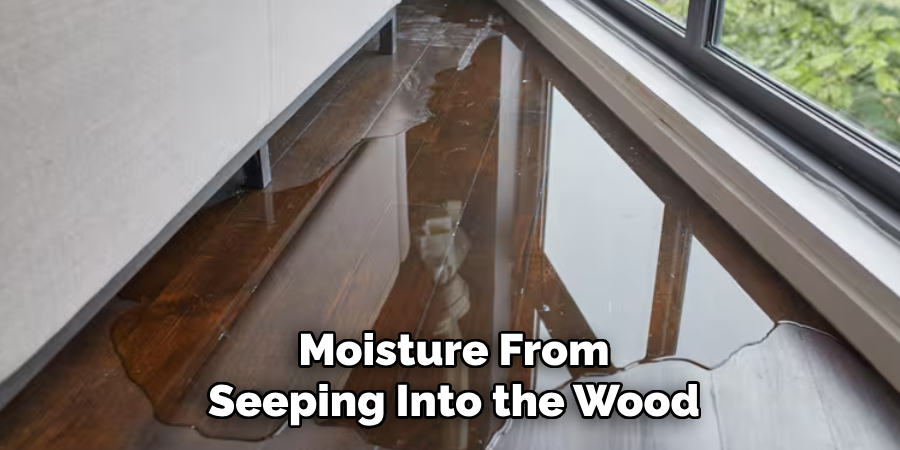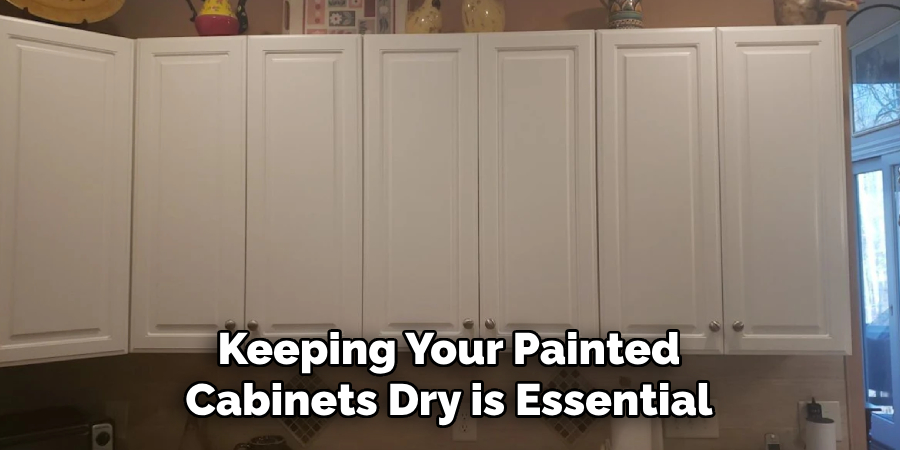Are you thinking about painting your cabinets? Painting is an affordable and effective way to give your kitchen a new look.

A proactive approach is essential when it comes to maintaining the beauty and longevity of painted cabinets. Painted cabinets are popular due to their versatility and aesthetic appeal, but they are also subjected to daily wear and tear. Protecting them involves a combination of preventative care, regular cleaning, and choosing the right products to preserve their finish.
By following a few key practices, you can ensure that your painted cabinets remain vibrant and well-maintained for years. In this guide on how to protect painted cabinets, we will explore effective strategies and tips to help you keep your painted cabinets looking their best.
What Will You Need?
You will need a few essential items to properly protect your painted cabinets. These include:
- Microfiber cloth or soft sponge
- Mild dish soap or cabinet cleaner
- Non-abrasive cleaning solution
- Soft-bristled brush
- Protective wax or sealant (optional)

Having these items on hand will make it easier to maintain the integrity of your painted cabinets and prevent damage during cleaning. Different types of paint may require specific cleaning methods, so always check with the manufacturer’s instructions before using any products.
10 Easy Steps on How to Protect Painted Cabinets
Step 1. Dust Regularly:
Dusting your painted cabinets regularly is the first line of defense against grime buildup and scratches. Using a microfiber cloth or soft sponge, gently wipe down the surfaces of the cabinets to remove dust particles. These particles, if left unchecked, can accumulate and may lead to scratches when rubbed or during cleaning. A microfiber cloth is particularly effective because it traps and holds onto dust without spreading it around, thus minimizing potential abrasive damage. Make a habit of dusting at least once a week or more frequently if your kitchen accumulates dust faster, ensuring that your cabinets maintain their pristine appearance.
Step 2. Clean Spills Promptly:
Addressing spills promptly is crucial in preventing stains and preserving the finish of your painted cabinets. If a liquid spill occurs, gently blot it with a clean microfiber cloth or soft sponge to absorb as much of the liquid as possible. Avoid rubbing the spill, as it can spread and potentially damage the paint. For sticky or stubborn residues, use a small amount of mild dish soap or a non-abrasive cleaning solution on a damp cloth to wipe the area clean. Ensuring spills are cleaned immediately protects the aesthetic of your cabinets and prevents moisture from seeping into the wood, which could lead to swelling or damage over time.

Step 3. Use a Gentle Cleaner:
Cleaning painted cabinets with a gentle, non-abrasive cleaner is critical to maintaining their luster and avoiding scratches. Opt for a mild dish soap diluted in warm water or a cleaner specifically designed for painted surfaces. Apply the cleaner using a soft sponge or cloth, gently scrubbing the cabinets to remove grease and grime. Avoid using harsh chemicals, ammonia-based products, or abrasive pads that can damage the paint. After cleaning, make sure to rinse thoroughly with a clean, damp cloth to remove any soap residues, and then dry the cabinets with a soft towel to prevent water spots or streaks.
Step 4. Avoid Excessive Moisture:
Excessive moisture can lead to damage, so keeping your painted cabinets dry is essential. After cleaning, always dry the cabinets with a soft towel to eliminate any leftover moisture. In areas near sinks or dishwashers where splash is familiar, regularly check and quickly dry any exposed surfaces to prevent moisture build-up. Use kitchen mats or trivets to shield against water exposure when working with wet items. A moisture-free environment will prolong the life of your painted cabinets and preserve their finish.
Step 5. Apply Protective Wax or Sealant:
For an added layer of protection, consider applying a protective wax or sealant to your painted cabinets. This step is especially beneficial for high-traffic areas or if the cabinets are cleaned frequently. A quality wax or sealant forms a barrier that helps resist stains, scratches, and fading. Before application, ensure the cabinets are thoroughly clean and dry. Follow the product instructions carefully, applying it evenly across the surface with a soft cloth or brush. Allow the product to cure as directed, enhancing the longevity of your cabinets and keeping them looking freshly painted.
Step 6. Handle with Care:
When using your painted cabinets, handle them carefully to minimize the chance of scratches or chips. Always use the handles or knobs to open and close cabinet doors and drawers, as this avoids unnecessary finger marks and reduces wear on the paint. When placing heavy or sharp items inside or on top of the cabinets, be gentle to prevent dents or gouges. Educate household members about proper care and encourage everyone to be mindful of how they interact with the cabinets.
Step 7. Avoid Direct Sunlight Exposure:
Prolonged exposure to direct sunlight can cause the paint on your cabinets to fade or discolor over time. To prevent this, consider using window coverings, such as blinds or curtains, to block harsh sunlight during peak hours. Alternatively, applying UV-protective film to windows can help minimize their exposure to damaging rays. Rearranging furniture or other items to shield your cabinets from direct light whenever possible is also beneficial. By reducing sunlight exposure, you ensure that the vibrant colors of your painted cabinets remain consistent and beautiful throughout their lifespan.
Step 8. Perform Routine Inspections:

Regularly inspecting your painted cabinets helps identify potential issues early, allowing for timely intervention. Check for signs of wear, such as chipped paint, loose hinges, or faded areas. Addressing these problems promptly can prevent further damage and extend the lifespan of your cabinets. If you notice chipped paint, consider touching it up with matching paint to preserve the integrity of the surface. Tighten any loose screws or hinges to ensure doors and drawers operate smoothly.
Step 9. Refresh Paint as Needed:
Over time, even the most well-maintained painted cabinets may show signs of wear and tear, such as minor chips, discoloration, or dullness. To rejuvenate their appearance, consider refreshing the paint when necessary. Start by thoroughly cleaning the cabinets to remove any dirt or grease. Sand the surface lightly to ensure the new paint adheres well, and use a primer if the paint layer has worn down significantly.
Choose a high-quality paint that matches the existing color or complements the kitchen’s decor. Apply the paint evenly using a brush or roller, allowing adequate drying time between coats. Refreshing the paint periodically not only restores the aesthetic appeal of your cabinets but also adds an extra layer of protection, ensuring they continue to enhance your kitchen for years to come.
Step 10. Professional Painting Services:
In cases where the wear and tear on your painted cabinets are extensive, or if you’re looking to completely revamp the look of your kitchen, hiring professional painting services can be an excellent option. Professional painters have the expertise and tools necessary to achieve a high-quality finish that may be difficult to replicate on your own.
They can also provide valuable advice on color choices and finishes that best suit your kitchen’s style. Before choosing a service, research local professionals, check reviews, and compare quotes to ensure you select a reputable company. Engaging professional services for significant refurbishments not only refreshes your cabinets’ appearance but can also significantly enhance your kitchen’s overall look and feel.
With these ten simple steps, you can keep your painted cabinets looking fresh and beautiful for years.
5 Things You Should Avoid
- Using Harsh Chemicals: Avoid cleaning your painted cabinets with harsh chemicals or abrasive cleaners. These can strip the paint and damage the finish, leading to discoloration and peeling.
- Rough Handling: Slamming cabinet doors or using them as stepping stools can cause dents and chips. Handle them gently to maintain their integrity and appearance over time.
- Neglecting Regular Cleaning: Dust and grime can build up on cabinets, leading to dullness and scratches. Wipe them regularly with a soft, damp cloth to keep them clean and preserve their finish.
- Don’t Use Sharp Objects: Avoid using sharp objects like knives or scissors on your cabinets. These can leave scratches and gouges, ruining the appearance of the paint.
- Avoid Water Damage: Keep your cabinets away from high-humidity areas, such as near the sink or dishwasher. Prolonged exposure to moisture can cause warping and peeling of the paint on your cabinets.
By avoiding these five things, you can ensure that your painted cabinets stay in top condition for years.

Conclusion
In conclusion, how to protect painted cabinets involves a combination of proactive maintenance and mindful handling.
You can effectively preserve its appearance and functionality by following the recommended steps, such as using gentle cleaning methods, performing routine inspections, and refreshing the paint when necessary. Additionally, avoiding harsh chemicals, rough handling, and excessive sunlight exposure will help prevent premature wear and tear. Whether you manage and upkeep yourself or engage in professional services, a committed approach to care will ensure that your cabinets remain a beautiful and enduring feature in your kitchen.
With attention to detail and regular maintenance, your painted cabinets can be a source of pride and a focal point in your home for many years.
Huston Douthit is a distinguished figure in the world of furniture design, with a decade of expertise creating innovative and sustainable furniture solutions. His professional focus lies in merging traditional craftsmanship with modern manufacturing techniques, fostering designs that are both practical and environmentally conscious. As the author of Fruniturix, Huston delves into the art and science of furniture-making, inspiring artisans and industry professionals alike.
Education
- RMIT University (Melbourne, Australia)
Associate Degree in Design (Furniture)- Focus on sustainable design, industry-driven projects, and practical craftsmanship.
- Gained hands-on experience with traditional and digital manufacturing tools, such as CAD and CNC software.
- Nottingham Trent University (United Kingdom)
Bachelor’s in Furniture and Product Design (Honors)- Specialized in product design with a focus on blending creativity with production techniques.
- Participated in industry projects, working with companies like John Lewis and Vitsoe to gain real-world insights.
Publications and Impact
In Fruniturix, Huston shares his insights on furniture design processes, materials, and strategies for efficient production. His writing bridges the gap between artisan knowledge and modern industry needs, making it a must-read for both budding designers and seasoned professionals.


